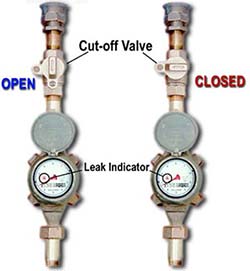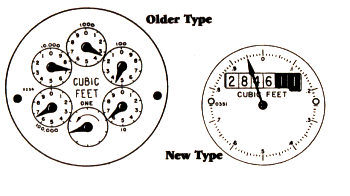About Tuscumbia Water Department
Tuscumbia Water Department is fortunate to have an abundant supply of water from a natural spring located near the downtown area. This body of water is known as "Tuscumbia Big Spring" and is supplied from three underground springs for a total of up to 50-MGD (million gallons per day). The Big Spring is the largest of three springs used in the state of Alabama for municipal water supply.
This water is pumped to our newly constructed Tuscumbia Water Treatment Plant, located at 307 S Indian Street, where the treatment process includes coagulation, sedimentation, filtration, chlorination, and fluoridation. The treatment plant can supply up to 4 MGD.
Water is stored in five storage tanks for a total of 1,500,000 gallons. This storage is used to meet system demands and fire flow requirements. The water is then distributed through over 70 miles of mains and service lines to over 5000 customers in our service area. Water is also supplied to the Littleville, Spring Valley, and Colbert County Water Systems.
After distribution and use, waste water is then returned to the Tuscumbia Waste Water Treatment Plant which has a capacity of 1.62 MGD and is a trickling filter type plant with an anaerobic digester. The resulting sludge is then land applied at a local farm.
Tuscumbia Water Department meets all state (ADEM - Alabama Department of Environmental Management) and federal (EPA - Environmental Protection Agency) requirements. Laboratory tests are performed continually to insure that the highest water quality is produced for the community and service area.
Water Rates | Water Safety | Water Conservation | Water Leak & Adjustment Policy | Read Your Water Meter | Water Quality Report
Water Safety
The following are safety tips to the use of water in the home:
How hot is your water?
Water temperature of the bathtub or faucet should never exceed 120 degrees Fahrenheit. If the water is too hot you can turn down the water heater setting; employ a plumber to adjust the setting, or call your landlord. If there is not a degree setting on your water heater, you can easily find out the water temperature by checking at the faucet tap closest to the heater. Hold a cooking or candy thermometer under the water stream to check the temperature.
When using the bathtub:
Turn on the cold water first and then add hot water. When the tub is almost filled, turn off the hot water. Turn the cold water off last. Do not put your child in the bathtub while the water is running.
Always stay with your young child when bathing.
Children can turn on the hot water by themselves. This is dangerous because it only takes a few seconds for the child to either scald himself or drown. Do not leave to answer the door or telephone.
When checking the bathtub water - put your hand all the way in the water, spread your fingers and move your hand back and forth throughout the length of the tub to check for hot spots before putting your child in the tub.
Water Conservation
Water Is A Valuable And Limited Resource So Be Aware Of The Amount Of Water You Use. Here Are Some Ways To Help You Use Less!
• Don't wait to fix a leaky faucet. Just a slow drip can waste 15 to 20 gallons a day.
• Put a bit of food coloring in each toilet tank in your home. Without flushing, watch to see if the color shows up in the bowl. It's not uncommon to lose up to 100 gallons a day from one of these otherwise invisible toilet leaks.
• Don't shower too long or fill the tub too full. Five minutes for showering and about five inches in the tub is plenty.
• Use automatic dish and clothes washing machines with full loads only. You're being more efficient with your water when there are enough dirty things for a full load.
• Use good common sense and water your lawn and garden only when needed. Avoid midday heat and windy days. Soaker hoses or trickle irrigation reduce run-off and are 20% more efficient than sprinklers.
Water Leak & Adjustment Policy
If you have an abnormally high water bill for one month, chances are you probably have some type of water leak. The following procedures will help you determine if a leak exists.
1. The toilet is the cause of 90% of the water leaks in Tuscumbia. Put a bit of food coloring in the tank part of the toilet. Without flushing, wait 30 minutes and then look in the bowl part. If the color shows up, either the flapper in the bottom of the tank or the seat it seals off on is leaking. If you don't have food coloring, we have dye tablets in the office provided at no charge. It is not uncommon to lose up to 150 gallons per day through one toilet.
2. If the toilets do not have a leak, you need to determine if there is a leak between the meter and the house. First, make sure all the water in the house is off, including the ice maker. Locate your water meter and watch the leak indicator on the face of the meter. If the indicator is moving, you probably have a leak between the meter and the house. Water leaks don't always rise to the top of the ground. The leak may follow the sewer line ditch below ground and the leak will never be detected.
The figure below shows the leak indicator and also the position of the water cutoff in both the closed and open position.

If you find the source of the leak and get the problem fixed, you may be considered for a "water leak" adjustment. Call our office at (256) 383-0321 for details about this policy.
Learn to Read Your Water Meter
The Water Department encourages all of our customers to read their water meters regularly. It is important to read, understand, and keep track of your water use because your water bill is based on the total number of units of water (ccf or hundreds of cubic feet) you use on a monthly basis.
Your water meter is read monthly, and your consumption is determined by subtracting the previous month's meter reading from the current month's reading. Water meters are highly accurate and dependable tools for water consumption evaluation.
The meter operates like the odometer in your car, registering ones, tens, hundreds, and thousands of cubic feet. Some meters have four dials, others have five. Some meters have a odometer readout, others have dials. You can read your own water meter by following the examples below.
A newer type of meter should have a odometer readout. On the example shown, the reading would be 284611 cubic feet. As before, only the first four numbers are used and the water bill would show a reading of 2846 ccf.

Try reading your water meter every day for a while. Subtract the previous day's reading from the current reading to get an idea of how many units of water you are using. Still confused?? Call our office at (256) 383-0321 for more water meter reading details.